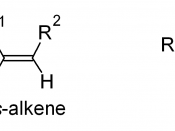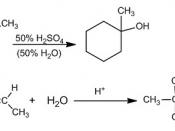Reactions of Hydrocarbons
Camille B. Sarain
De La Salle University-Dasmariñas
Dasmariñas City, Cavite, Philippines
ABSTRACT
The reactions of hydrocarbons to different chemical test were used in classification whether they belong to alkane, alkene, or alkyne group. Hexane which reacted only with bromination in the light test was classified as alkane. Eugenol which belongs to alkene group reacted to all chemical tests except for the tollen's test. And alkyne group reacted to all chemical tests.
INTRODUCTION
Hydrocarbons are an organic compound that contains carbon and hydrogen and they are classified according to their structure. Primarily hydrocarbons are divided into aliphatic and aromatic hydrocarbons. Aliphatic compounds are carbon compounds arranged in open chains and can be straight chained, branched and can contain single, double or triple bonds. Aliphatic compounds are divided into three classes; those with single bonds are called alkanes and are said to be saturated and those with double or triple bonds are alkenes and alkynes and are unsaturated compounds.
Aromatic compounds on the other hand are compounds containing close rings of carbon atoms in which the pi-electron are delocalised across the structure. They are referred to as benzene ring compounds and may also contain other atoms like oxygen and nitrogen. In this experiment the various hydrocarbons are analysed based upon their fundamental reactions when they are subjected to various varieties of reagents under some experimental conditions which would be used to distinguish them.
The reactions of unsaturated hydrocarbons are different from that of saturated ones. Primarily, saturated hydrocarbons are less reactive than the saturated counterpart. Addition of Bayer's reagent (KMnO4) which is a strong oxidative reagent starts the formation of alcohol and carboxylic acids for alkynes. Tollen's reagent is composed of ammoniacal silver nitatre and classified as weak oxidizing agent that reacts with terminal alkynes to form silver alkylides.


